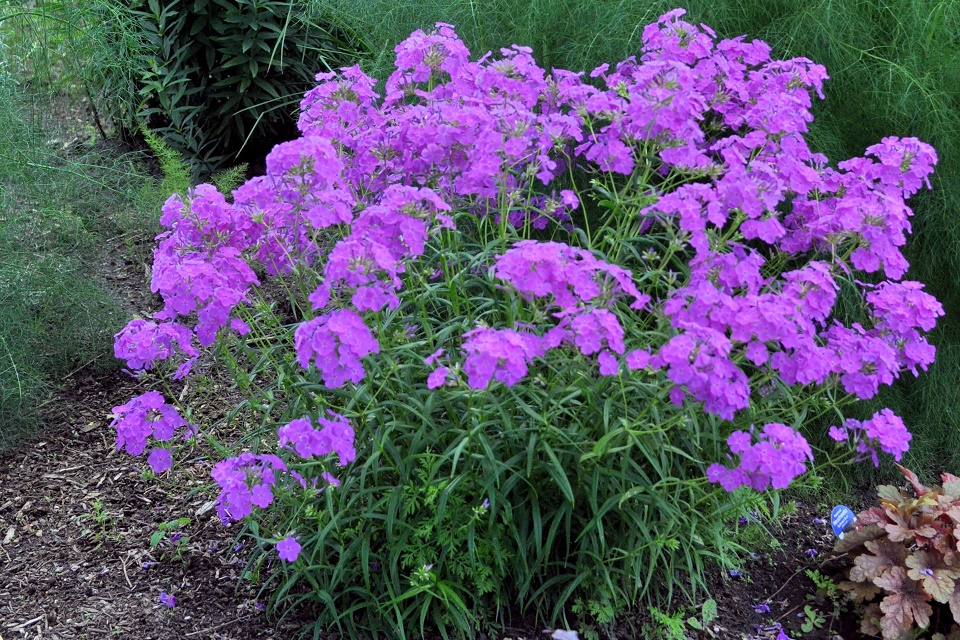
A Blooming Machine
From the UT Gardens
June 2016 Plant of the Month: Phlox hybrid ‘Wanda’
Submitted by Carol Reese, UT Extension Horticulture Specialist, Western Region
The story I was told is that a woman named Wanda handed this phlox to perennial plant guru Allan Armitage, who put it into the trial gardens at the University of Georgia. From there it might be said that it “went viral” in horticultural circles, but there is little to be found otherwise about its origins, or even exactly what species of phlox it might be. What is known, is that ‘Wanda’ is one tough blooming machine, in spite of the delicate appearance of its slender stems.
Wherever Wanda goes, the plant wins friends and influences people. Since this phlox has never been patented, it is freely propagated by a number of nurseries these days; yet, it might be hard to find simply because it sells out quickly, due to Wanda’s charming ways.
Wanda is thought to be a hybrid, and some speculate that the genes of Phlox divaricata might be in there along with P. pilosa. The plentiful flowers are a strong fuchsia, perhaps magenta, and may vary a bit on whether you place her in full sun or partial shade.
More than one grower has remarked on how easy it is to propagate this plant from cuttings and how quickly it blooms, often forming flowers simultaneously with new roots. In the garden it will begin flowering in mid spring, and continues throughout the summer months and on into fall. It has been reported to stay in bloom through the winter in cold frames, and even inside on sunny windowsills.
Plant Wanda in well-drained soil and with plenty of sun for best performance. Though Wanda will provide flowers in partial shade, the plant becomes a bit floppy and weak stemmed, and might benefit from some staking. In sun, where it is more robust, it will grow about 2 feet tall and a bit wider. It is happy to bloom in a mixed pot where the other plants will provide support.
Hardiness reports vary from source to source, and it might be rash to make claims about how far north it will succeed until more trialing is done. It is known to return reliably through zone 7, though the winters have not been severe enough to give a good test since its introduction. Some have reported it as reseeding in gardens as well.
In the UT Gardens in Jackson, it can be seen in the most southeastern perennial berm, across the road that runs west of the main office building, and is sited beautifully to take advantage of a background of bronze fennel.
The UT Gardens includes plant collections located in Knoxville, Jackson and Crossville. Designated as the official botanical garden for the State of Tennessee, the collections are part of the UT Institute of Agriculture. The gardens’ mission is to foster appreciation, education and stewardship of plants through garden displays, educational programs and research trials. The gardens are open during all seasons and free to the public. For more information see the Gardens website: http://utgardens.tennessee.edu
Contact:
Patricia McDaniels, UTIA Marketing and Communications, 615-835-4570